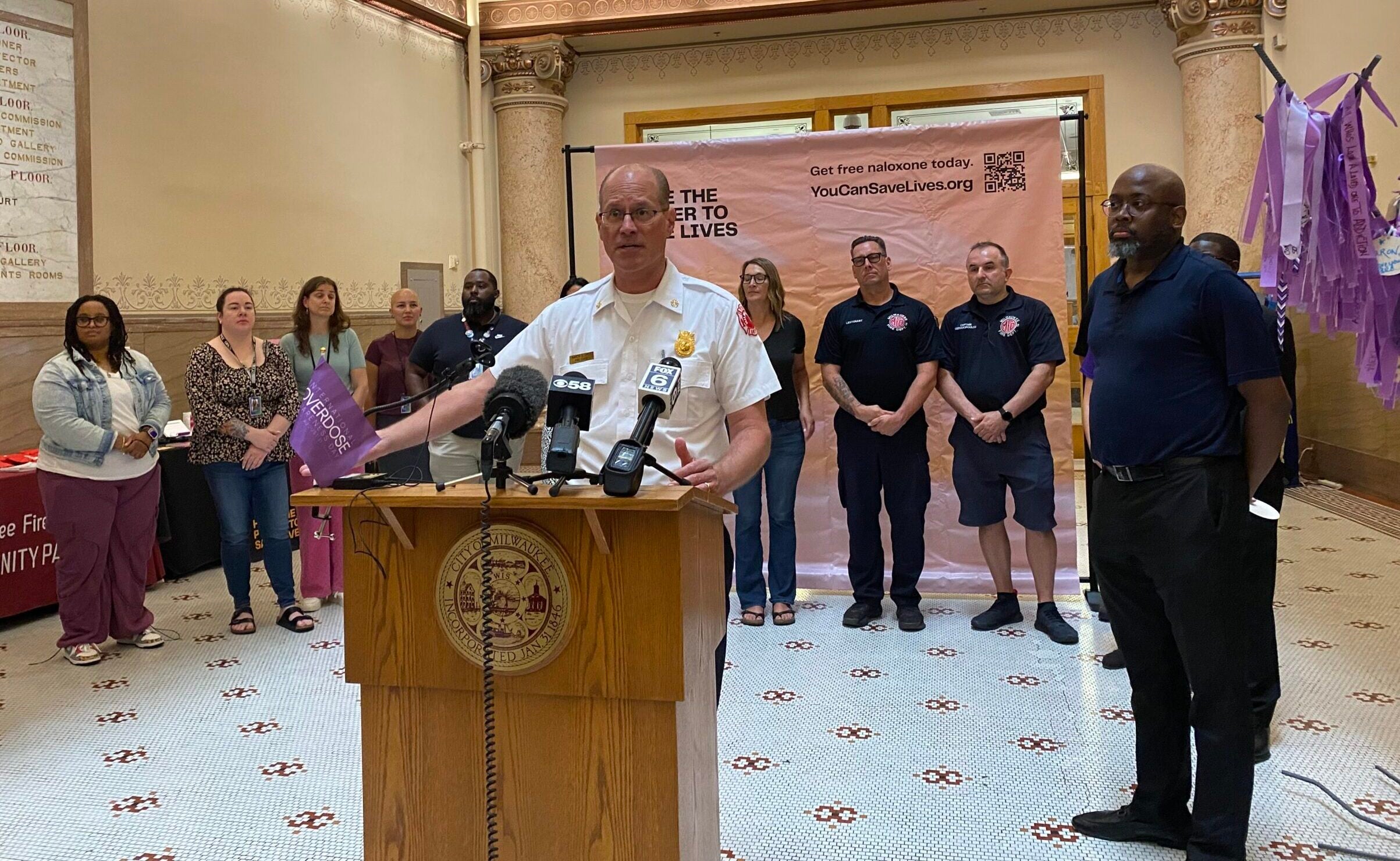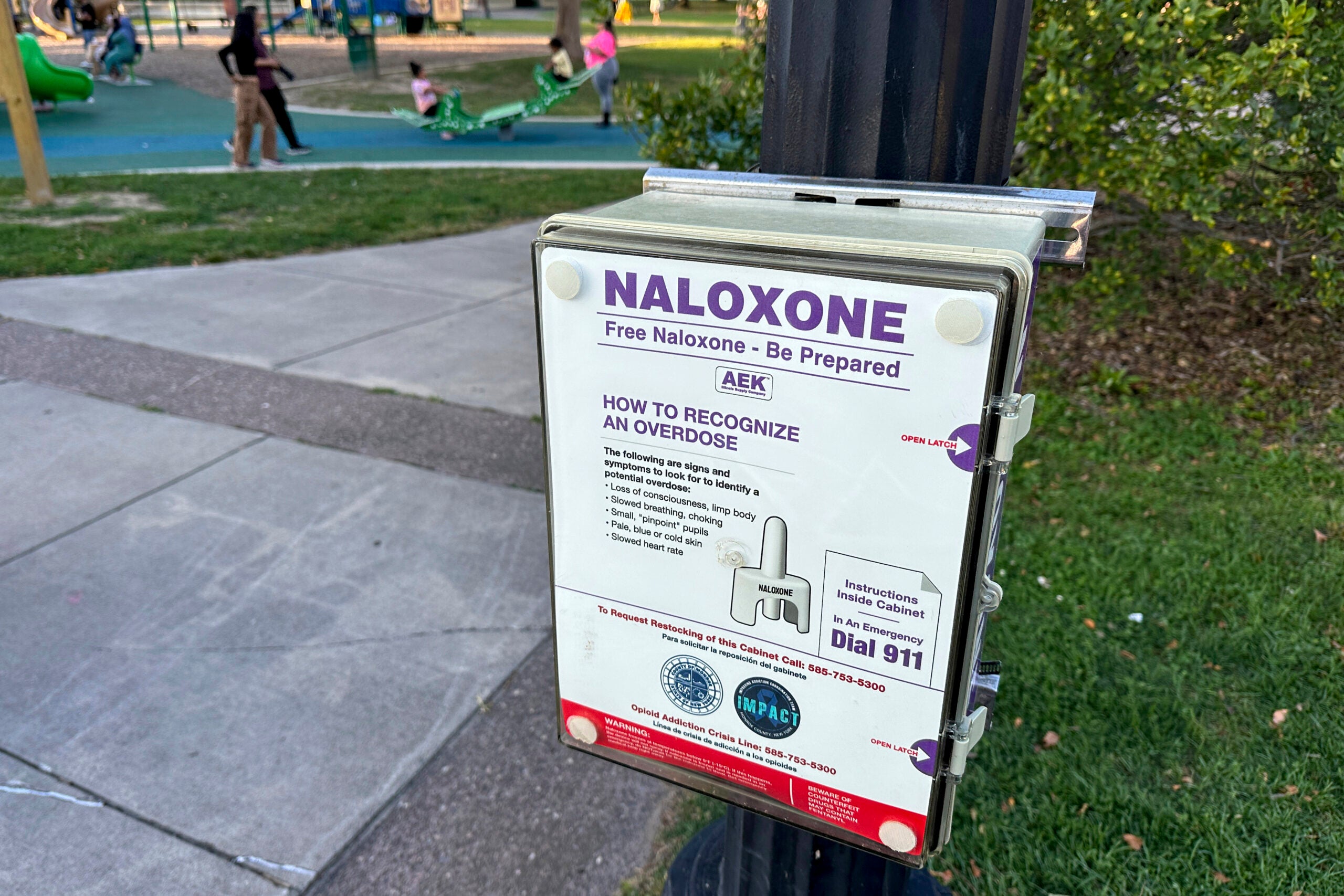At the end of December, Kenosha County saw a string of nine overdoses in a 12-day period, including three in one day. Kenosha County Medical Examiner Patrice Hall issued a press release on Dec. 31 warning the public of the risk.
“Substances of all sorts are being laced with fentanyl, which can be deadly when used even in small amounts,” Hall said in the press release. “If you obtain drugs illegally, you truly do not know what you are getting.”
Official statistics about the number of overdose deaths in 2023 won’t be released for months. But officials around the state say the continued presence of fentanyl in almost all types of drugs purchased illicitly has continued to worsen the problem in Wisconsin.
News with a little more humanity
WPR’s “Wisconsin Today” newsletter keeps you connected to the state you love without feeling overwhelmed. No paywall. No agenda. No corporate filter.
For Kenosha County, unofficial death statistics show there were 43 drug-related deaths last year. Thirty-two of those deaths involved fentanyl, a higher percent than in 2022 but similar to 2021.
In western Wisconsin, La Crosse County saw a record number of overdose deaths in 2023. The county medical examiner reported 55 suspected overdose deaths for the year, far surpassing the previous record high set in 2020 of 40 deaths. Of the deaths with completed toxicology results in 2023, 72 percent involved fentanyl last year.
Dr. Chris Eberlein, emergency medicine physician at Gundersen Health System, said fentanyl became a predominant drug in 2022. But what has changed is the fact that the potent opioid is now present in almost every type of illicit drug sold, including previously unaffected substances like cocaine.
“I’ve personally taken care of patients that have only used cocaine or so they thought,” he said. “These patients, they didn’t have Narcan nearby, it was not expected, and we’ve seen deaths due to that.”
‘Trying to put your finger in a leaking dam’
Eberlein said the prevalence of fentanyl means previous overdose responses aren’t adequate anymore. He said emergency medical responders are having to use multiple doses of the overdose reversal drug Narcan, a medication that has been highly effective in treating other types of opioid overdoses.
The state’s Narcan Direct Program has worked to make the lifesaving medication more widely available, providing free doses of the medication through community organizations that train recipients on how to use it. Eberlein said some people may be used to waiting to call 911 until after trying the medication on their own.
But he urged drug users and those around them to not wait to activate first responders.
“There’s a chance it’s not going to work,” he said. “Learn basic life support skills, basic rescue breathing. If you don’t want to take a course, go online and look it up… This is a respiratory arrest illness, and if you can do some respiratory support, it’ll get someone through it until EMS arrives.”
Eberlein said harm reduction efforts like the Narcan Direct Program and a similar state initiative distributing fentanyl test strips are helping reduce deaths. But he said it ultimately feels like “trying to put your finger in the leaking dam.” He said more investment is needed in treating addiction and substance use long term.
“We’ve really expanded some of the medication-assisted treatments and those have been shown to significantly reduce deaths long term,” Eberlein said. “I think we have to go beyond grants and look at this as a long-term, sustained thing. And part of that, I really believe, is increasing the inpatient behavioral health model of care.”
In Dane County, overdose deaths hit an all-time high in 2021 at 166 deaths. Casey Schumann, epidemiologist for Public Health Madison & Dane County, said the number of deaths declined slightly in 2022, the first decrease the county has seen since 2018. Data from the first six months of 2023 appears to follow a similar pattern.
But she said the decline was not even across all parts of the population in 2022, with the number of overdose deaths increasing in Black men and people who are 55 to 65 years old.
Schumann said fentanyl was involved in over 75 percent of those deaths in 2022. She said the county also saw an increase in the number of deaths related to cocaine and other stimulants, as well as the number of deaths caused by a combination of stimulants and opioids.
“I think it tells us that we can’t take our foot off the gas,” Schumann said. “The fact that not all populations are experiencing this decrease equally is concerning. The fact that we have some drugs in the population that are increasing again, that is also cause for concern.”
Wisconsin Public Radio, © Copyright 2026, Board of Regents of the University of Wisconsin System and Wisconsin Educational Communications Board.





